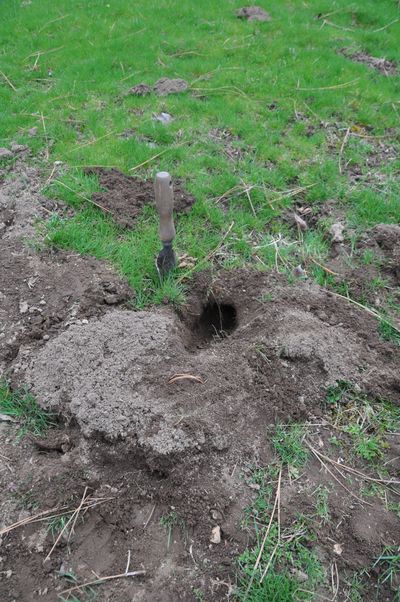Gardening: Once established, gophers are hard to relocate

For the last couple of summers, my neighbor and I have been dealing with a pocket gopher invasion that is getting closer to our joint fruit orchard. Their familiar mounds kept appearing around the tree roots. Big mounds.
Gophers are only a problem when they get in the way of human activity. Otherwise, they are valuable soil miners that help mix soil horizons and restore soil tilth. Their tunnels provide homes for other small animals and they themselves are an important link in the food chain. They are active year-round and eat roots, bulbs and other fleshy plant material as they tunnel. Where there is a good snow pack, they will eat bark off trees and shrubs buried under the snow.
Gophers are solitary creatures so most of the mounds in a cluster are the work of a single animal. They are recognizable by their two big yellow front teeth. When they dig, they create fan shaped mounds with the entrance hole to one side of the mound.
The best method for catching gophers is a body-gripping trap set in an active tunnel runway. Interestingly, body gripping traps were declared illegal in Washington by Initiative 713 in 2000. The initiative was intended to stop the use of body gripping traps for wildlife trapping but inadvertently included moles and gophers. Ironically, it’s only illegal to use the traps; it’s not illegal to sell them. Repeated efforts to change the law have failed.
The internet is full of home remedies for controlling gophers but most of them haven’t stood up to scientific scrutiny. It’s more likely the gophers moved somewhere else on their own. So, forget using remedies such as pickle juice, bleach, moth balls, razor blades, castor oil-based sprays or pellets, broken glass, red pepper concoctions, rose branches, vibrators and ultrasonic devices. My neighbor tried the ultrasonic devices with little success.
Beyond traps, gas cartridges, smoke bombs, and flooding the tunnels can be effective on new tunnel systems but are often ineffective on well established systems. Cartridges you activate with a match can be a fire hazard during the dry season. Don’t use baits that contain strychnine or zinc phosphide as they can kill other wildlife like hawks and owls and domestic pets who feed on a dead gopher.
Along with the interventions above, it may be necessary to adapt your gardening techniques. Bulbs and small plants can be protected by planting them in metal mesh or hardware cloth baskets either homemade or purchased. Tree trunks can be protected from winter gnawing by wrapping the lower trunks with hardware cloth. Gophers are active under the snow, and you won’t see the damage until spring. Encourage hawks and owls to hang around by putting up nest boxes and poles the birds can sit on and watch for a head to pop up.
One last point, wildlife experts say we don’t have moles in our region. Our soil here is too hard for them to dig in, especially during the dry summer and fall.